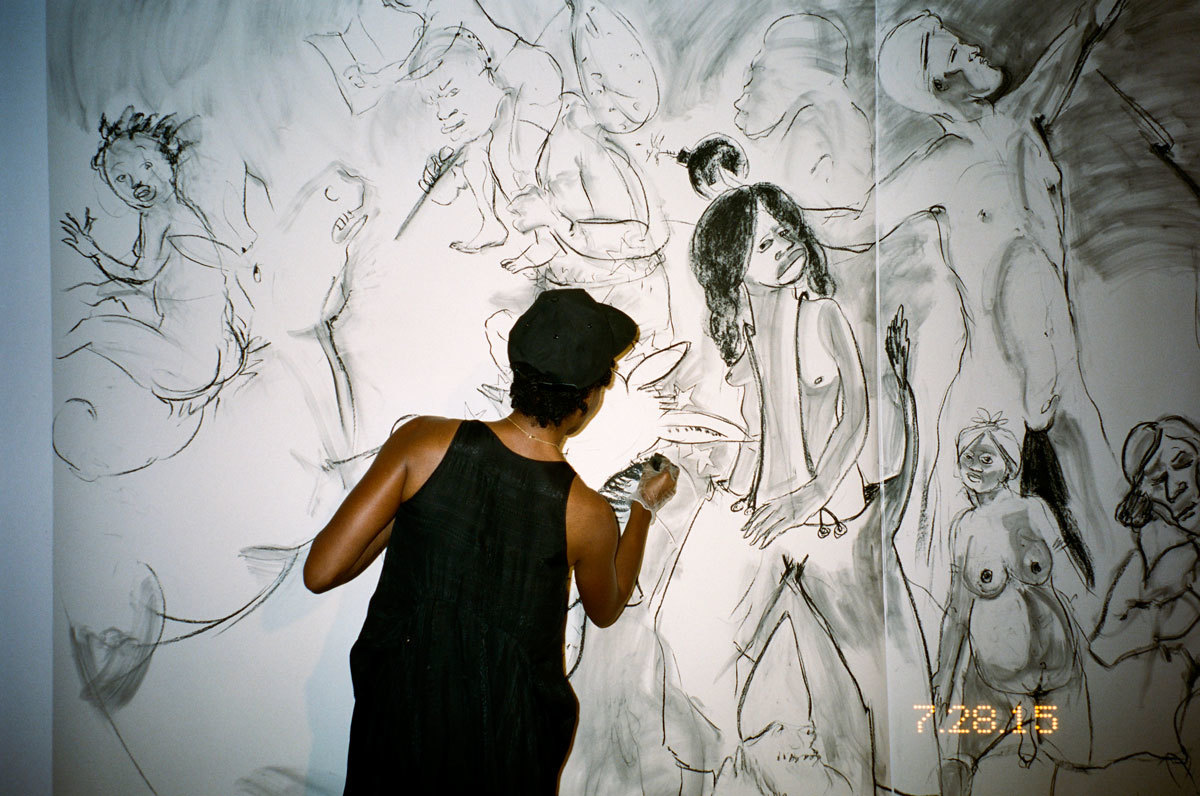Last year, Kara Walker’s gigantic sphinx-like sculpture at the disused Domino Sugar Factory in Williamsburg was the talk of New York. A Subtlety was “an Homage to the unpaid and overworked Artisans who have refined our Sweet tastes from the cane fields to the Kitchens of the New World on the Occasion of the demolition of the Domino Sugar Refining Plant”; an exaggerated “mammy” figure that reflected old stereotypes of African-American women and was a brilliant fusion of ideas, materials and space. It was one of those rare art shows that becomes an essential tourist destination and manages to cross over into the wider public consciousness.
Now Walker (who’s in the collections of major museums including the Guggenheim, MOMA and the Tate) has a smaller-scale, but no less provocative show opening at Victoria Miro in London. Go to Hell or Atlanta, Whichever Comes First throws the spotlight on Stone Mountain, a rocky outcrop near Atlanta; a mountain that the Ku Klux Klan claimed as their spiritual birthplace in 1915 before carving confederate scenes on it, with their associations with racism, slavery and white supremacy. The monument still cheerily promotes itself as a great family destination, with “the famous laser show spectacular, water park, concerts, festivals, hiking, camping,” but after that shootings of nine African-American churchgoers in Charleston earlier this year and the subsequent fight to get the Confederate flag removed from state spaces (most brilliantly by Bree Newsome, who scaled the flagpole at the South Carolina capitol and removed it), Walker visited Stone Mountain again, and is throwing fresh light (and shade) on it, questioning its continued presence and popularity.
The exhibition includes a cut paper installation, watercolours and a large-scale photograph on Stone Mountain, which has been made in collaboration with legendary skate, hip hop and NYC chronicler Ari Marcopoulos. Here’s an extract from a conversation between Walker and Marcopoulos from the artists’ book that accompanies the show.
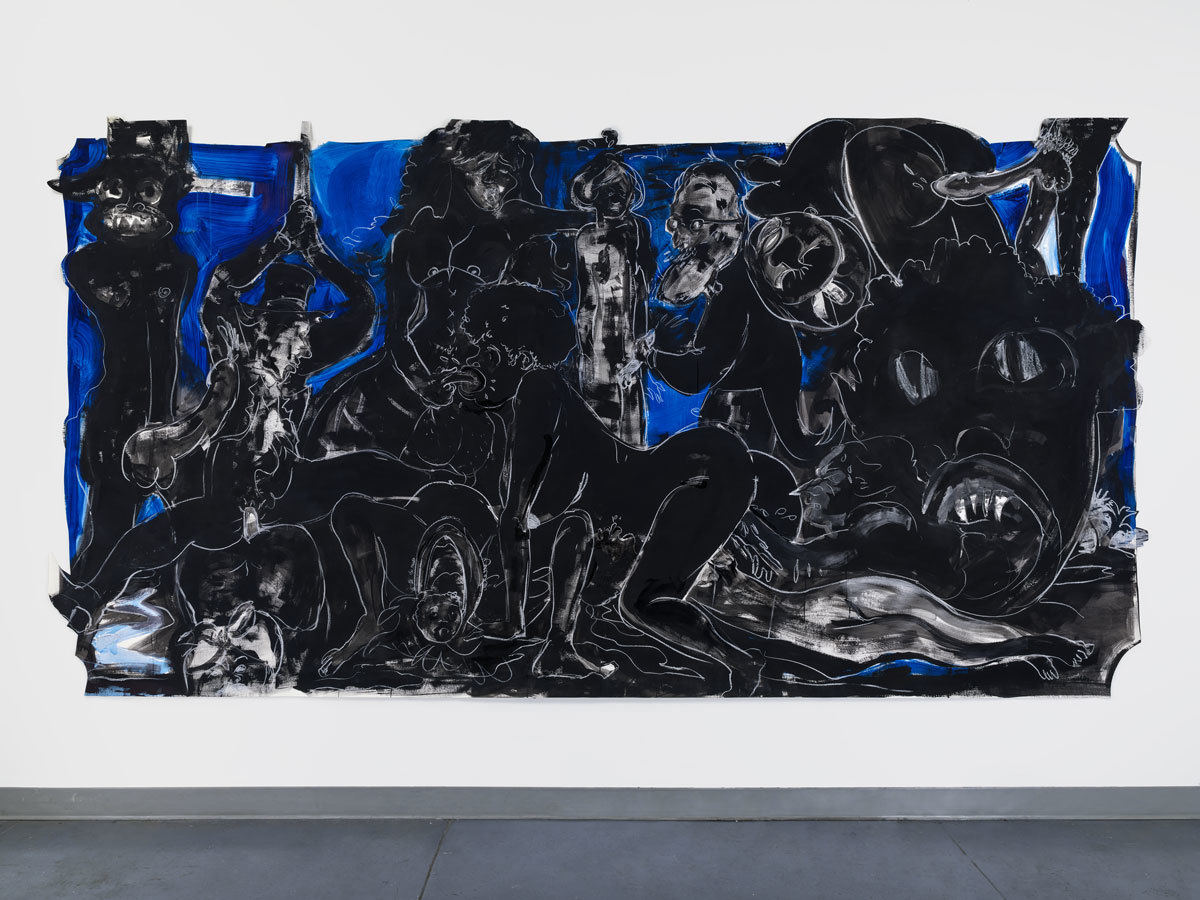
AM: We visited Stone Mountain Park twice, first to scope it out for the light, because we were going to take this picture, and then we went the next day very early in the morning and we were pretty much there by ourselves. We talked to some of the groundskeepers. They were all very curious about my giant camera.
When you’re there and you see the visitors looking at that informational movie… I couldn’t stand to be in there much longer. I saw these people in there, watching it, and I thought, “These people are actually sitting here, and they’re here to honour the confederacy,” and it made me feel like I didn’t want to be in that room.
KW: There was a handful of die-hard Civil War enthusiasts that morning. I’ve been in those rooms, and I find that kind of thing fascinating. The thing that has fuelled my work since I started is this misremembered history, or a kind of flawed refashioning of history spelled out along deeply personal terms. I just find it really fascinating when people gouge a narrow channel in their thinking, and then just keep gouging into that narrow channel, as if by gouging further into it, it makes the lie a fact as opposed to a bigger wound. And that’s actually kind of the subtext of what I was reading about while you were changing the 8-x-10 film and prepping the camera.
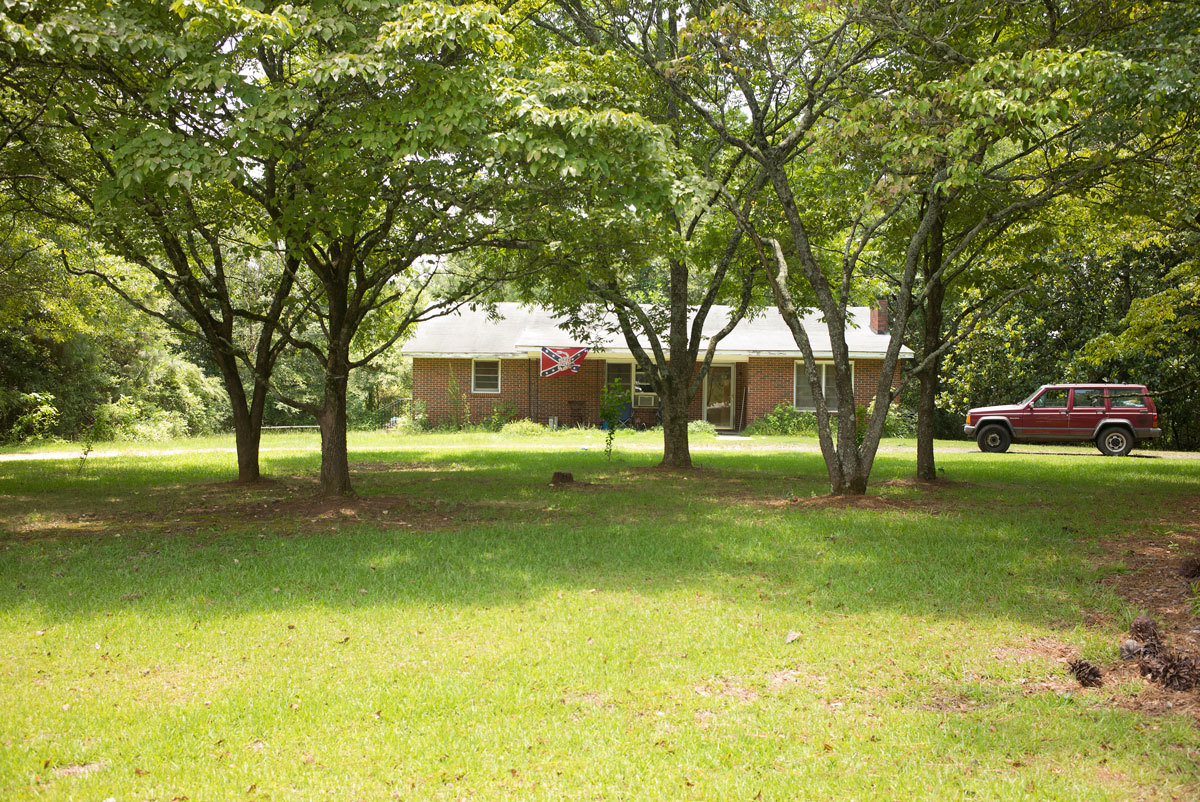
AM: It’s just that the way it is portrayed the Union victory was not reason for celebration, and the defeat of the Confederacy was, or actually, is still, a tragedy. That’s why they still wave that fucking flag around.
KW: Exactly! I was reading up on the confederate carving on Stone Mountain that morning and just laughing about what a grand, hubristic, fascist enterprise that carving was. In 1916 the Stone Mountain Memorial association got in over their heads trying to make this memorial. They wanted the whole mountain to be carved up with soldiers and horses and generals all marching off, really to their deaths, to the doom of the South. But it took decades, a couple of different sculptors, a lot of running out of money and eventual state intervention. The work was abandoned for decades. I mean, once you carve into a freaking rock, you can’t really erase it without just dynamiting more and more of the rock away, which gives the mountain and that carving this wounded appearance where so much extra stone had been blasted away. And for what? To create this image of the confederate Generals Robert E. Lee, “Stonewall” Jackson and the (treasonous) president of the Confederacy Jefferson Davis.
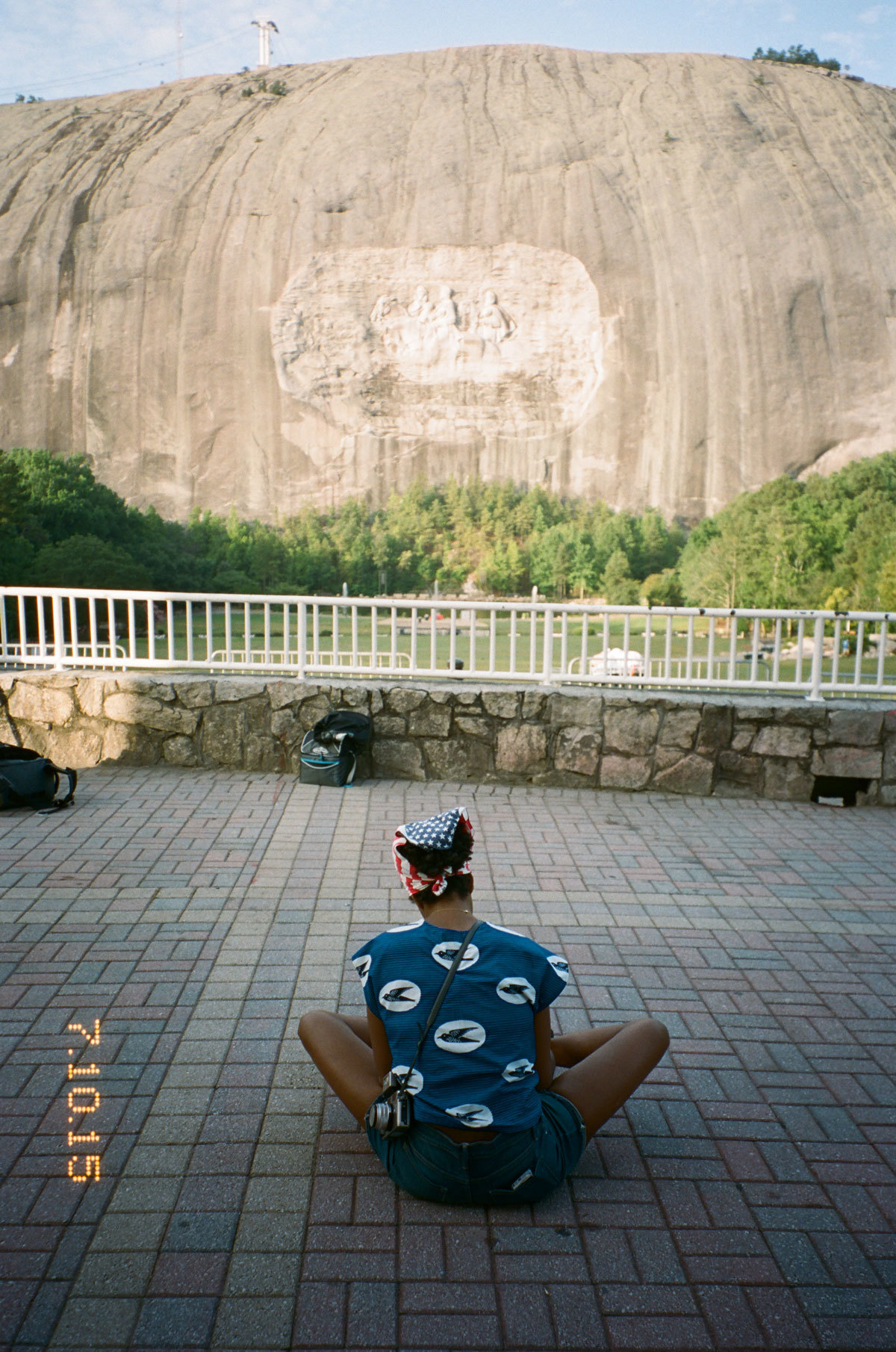
AM: Well, it is a scar, and in a way…
KW: Even at its dedication in 1970, it looked half finished.
KW: Yeah, like a poorly planned, fatalistic, half-finished wound that everyone wants to celebrate, like the war itself.
AM: First of all, I think it’s an offence to nature when you look at it, because it’s such an aberration. And then for me, my first impulse was, let’s find a way to get rid of it, or obscure it, or do something to it to change it, or just to destroy it. I don’t know. There’s the question about what would you do with it.
KW: You can’t destroy it without destroying the mountain.
AM: Well, yeah you would.
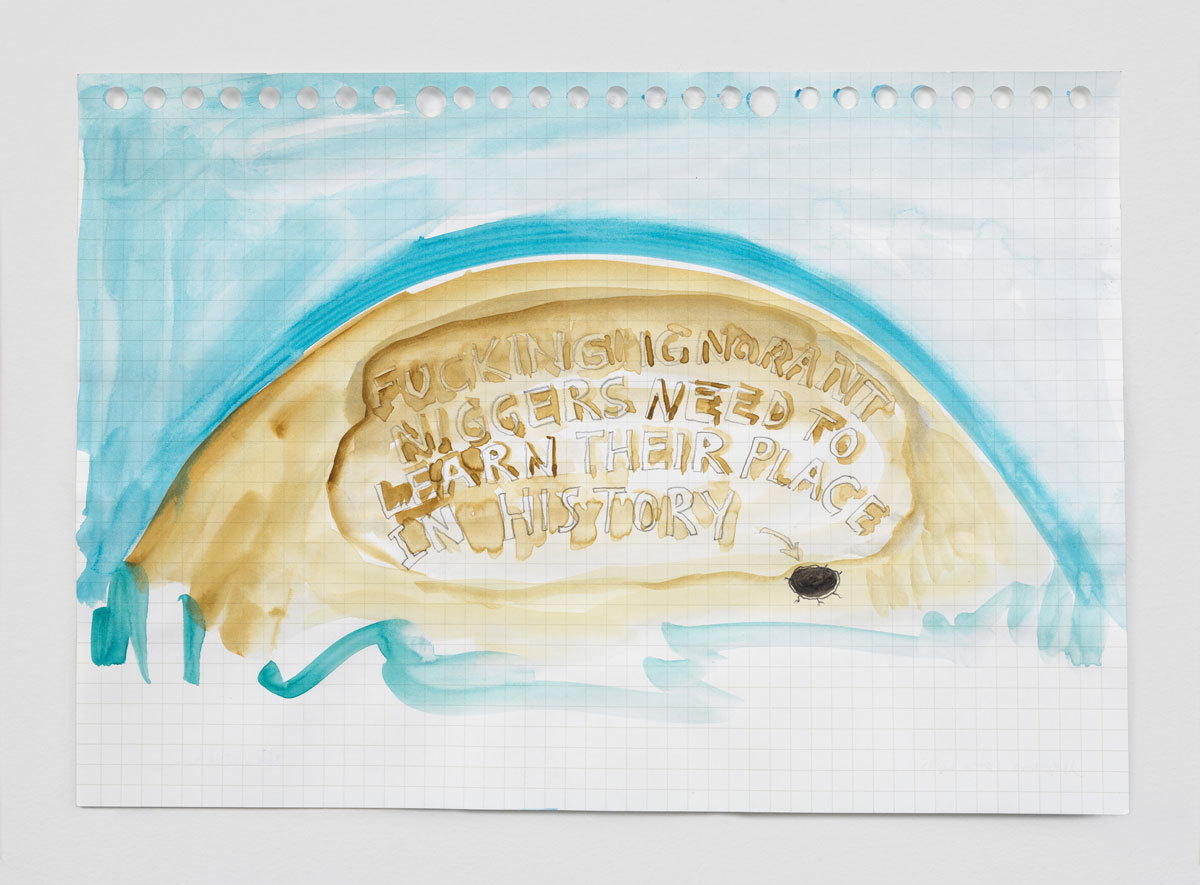
KW: But I have thoughts about it, how to transform it without just blowing a hole in the rock, Taliban style.
AM: We could grow some wisteria on it. But on the other hand, I thought, if at least—not at least—if they would just spell it out, what the truth is, if it would be called “Stone Mountain Scar Racist KKK Monument”.
KW: We should use Kudzu. The white supremacist monument consumed by invasive, climbing killer weeds.
AM: And if that would be the theme park, instead of going up in a fucking gondola or driving around in these little carts, and whatever else they have there.
KW: A little choo-choo train…. I mean it could become beautiful, full of screaming cicadas. The park managers could go ahead and present the mountain like this:, “This is a white supremacist monument. It was created at great expense by a team of narrow- minded people, and now we’re letting nature have her turn”. Or go ahead and acknowledge the majority black presence in the park and surrounding communities. I mean Atlanta is now 54% African American, and growing. I mean, we could actively address what that carving means in its new context.
My family even held their family reunion there the weekend we visited.
AM: The park is beautiful.
KW: The park’s alright. The mountain is beautiful.
Kara Walker, Go to Hell or Atlanta, Whichever Comes First runs 1st October – 7th November at Victoria Miro, 16 Wharf Road, London N1 7RW. The book is available from gallery, priced £14.50.
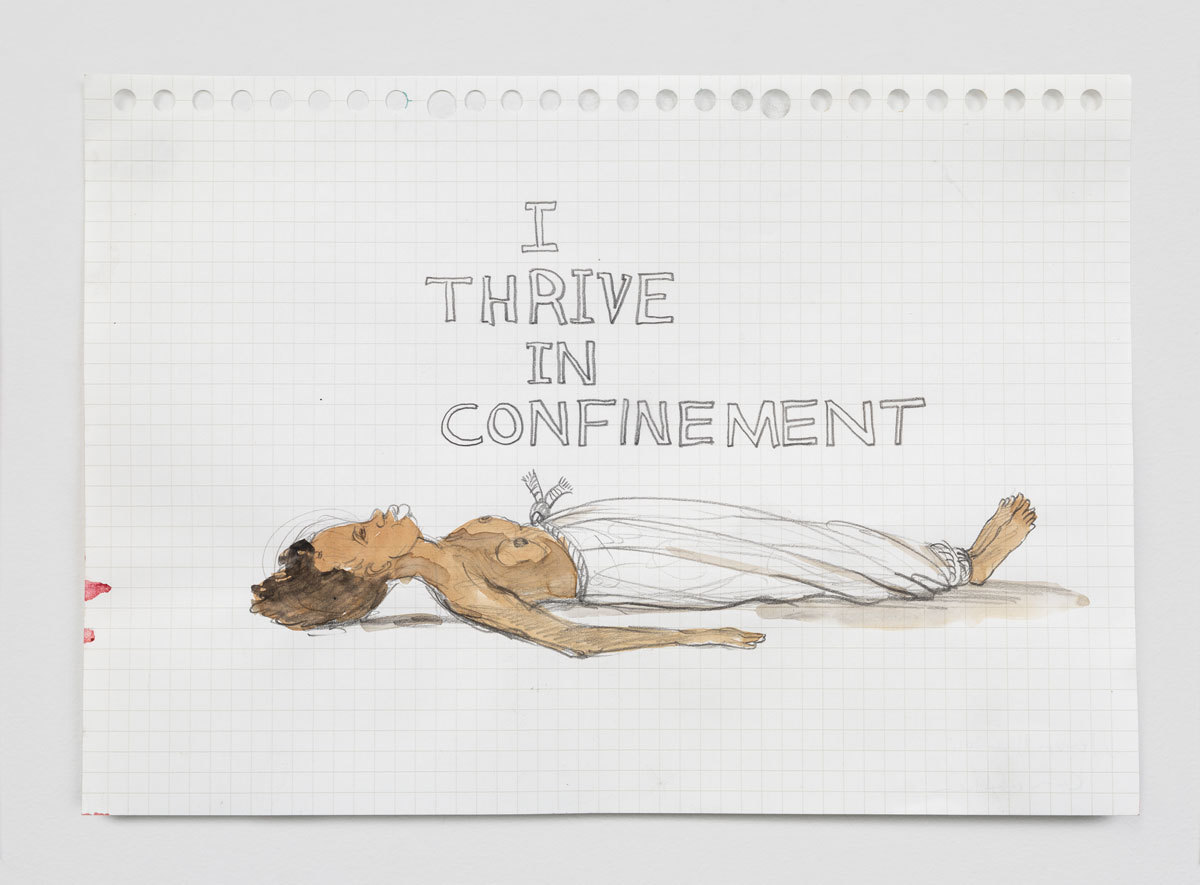
Credits
All images courtesy the artist, Sikkema Jenkins & Co. New York and Victoria Miro, London © Kara Walker
